Communities
Beeville
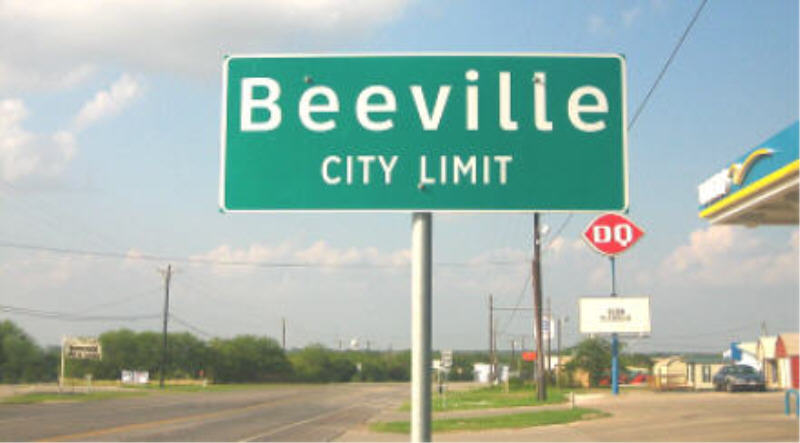
The site was first settled by the Burke, Carroll, and Heffernan families in the 1830s; it was first named "Maryville" for Mary Heffernan, then renamed "Beeville" after Barnard E. Bee, Sr., who served as Secretary of State and Secretary of War for the Republic of Texas. It was then called "Beeville-on-the-Poesta", with a nearby community "Beeville-on-the-Medio" seven miles (11 km) to the west. In 1859, Beeville's first post office opened. Beeville was incorporated as a town in 1890, but the incorporation was dissolved the following year. In 1900 the population was 2,311. Beeville was reincorporated as a town in 1908.
Blanconia
Blanconia dates from 1834. After the Texas Revolution, it was in Refugio County but Bee County was created in 1857. It was once called Kymo with the name being changed when a post office was applied for in 1888. The name Blanconia is derived from the name of the local Blanco Creek.
Blue Berry Hill
Blue Berry Hill is a residential community located off U.S. Highway 59 and Loop 351 outside the city limits of Beeville in central Bee County. The unincorporated community was in existence by the 1980sMineral
Mineral is an unincorporated community in northwestern Bee County, Texas. It lies along local roads northwest of the city of Beeville.This early home picture is the home of well known Bee County Historian Gentry Dugat. He organized the Bee County Historical Commission in early 1958. He also took this picture. It was located NE of Mineral and a few miles west of Pettus. As a kid in the early 1970's, I had the chance to look in this old place (with family permission). It was quite run down by then with it being vandalized, doors off, windows out, etc., in some parts. I heard a few years later vandals finally burned the place down. Mr. Dugat was quite a politico & history collector as evidence of the trashed documents & broken collector plates ankle deep on the floor. It is said when he passed on, the house was left intact with a lot of his collections left inside. It is too bad it was ruined by vandals & mother nature. This little picture I saved from the rubble as well as a 1923 Tuleta Newspaper. I was fortunate to know his wife, Mrs. Lena Dugat, who worked at the Pettus Schools for several years with my mother Jeanette Beauchamp. [Wm. Beauchamp]
Normanna
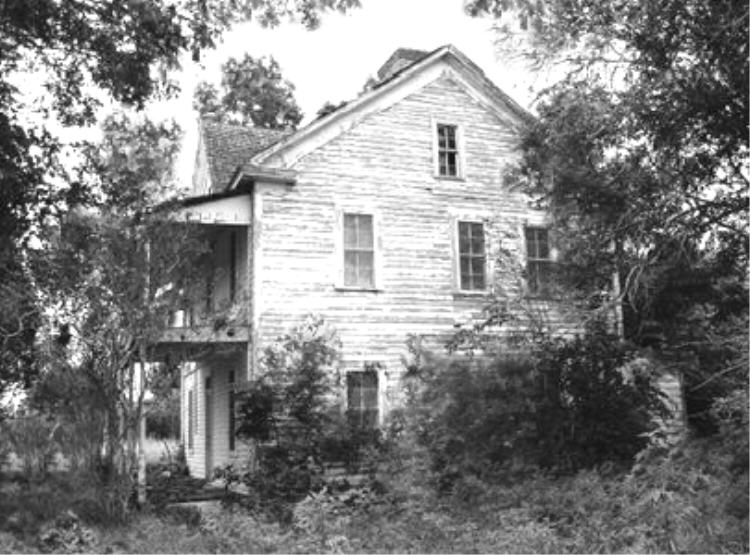
This area was first a Mexican land grant in 1831, then in 1874 it was named Walton Station for Sheriff D.A.T. Walton. The postal authorities rejected the application for a post office named Walton, the name Normanna was submitted and accepted. Normanna is Swedish meaning "the place of Norsemen". This derived from the Norwegian immigrants that moved into the area in 1893 and decendents of the original settlers still live in this area.
Oaks
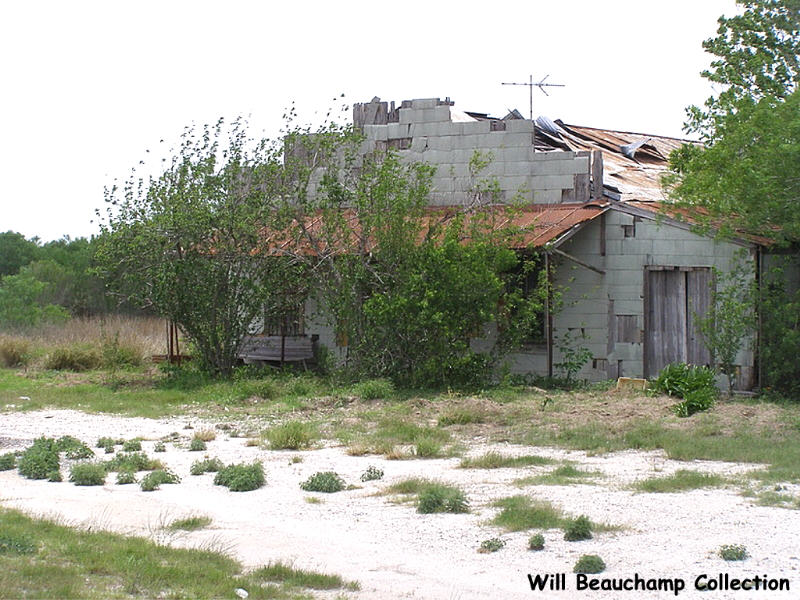
Oaks, TX: on State Highway 72 twenty-one miles northwest of Beeville in n/w Bee Co., was settled in the late 1800s. During the mid-1930s two mills operated at the site; children attended nearby County Line School. After World War II many residents moved away; as late as the mid-1960s the community still had two businesses and a number of scattered houses. In 2000 Oaks was a dispersed farming community. Source: Handbook of Texas Online.
Olmos

Olmos, Texas, Bee County, Texas, FM 796 and FM 797, About 13 Miles SW of Beeville
Originally named Los Olmos or "The Elms", the community was situated just north of the creek of the same name. The change of name became official in 1917. Olmos' history begins just after the Civil War when partners Hank and Joe Sullivan started a ranch. They were soon joined by two English sisters who started a sheep ranch. Photo is old Olmos School.
Pawnee
Pawnee is at the intersection of Farm roads 673 and 798, twenty-two miles northwest of Beeville in northwestern Bee County. It reportedly was named for a board inscribed "Pawnee" and nailed to a tree by travelers; apparently arrowheads found in nearby Sulphur Creek suggested that Pawnee Indians had once used the area. A Sullivan family purchased a large tract of land in the area before the establishment of the county in 1849. John E. Wilson bought the ranch from the Sullivans in 1877 and sold part of it to William A. Pettusqv in 1881. W. J. Lott entered a partnership with Pettus in 1889 and soon afterward became the sole owner of the land.The earliest settlers of Pawnee included Fred Hoff and his family, who settled three miles southwest of the site of Pawnee on land bought from the Lott ranch in 1890. D. C. Benham, another early settler, arrived in 1900. The first one- teacher Pawnee school was built in 1910, when it enrolled thirteen pupils. About the same time, M. Carson opened up Pawnee's first store. The first of three cotton gins was erected in 1916 by J. Parker, and in 1925 Pawnee had four grocery stores, a doctor's office, a drugstore, a cafe and meat market, a garage, and a blacksmith's shop. Pawnee remained a small settlement until 1930, when oil was discovered nearby.
Pettus
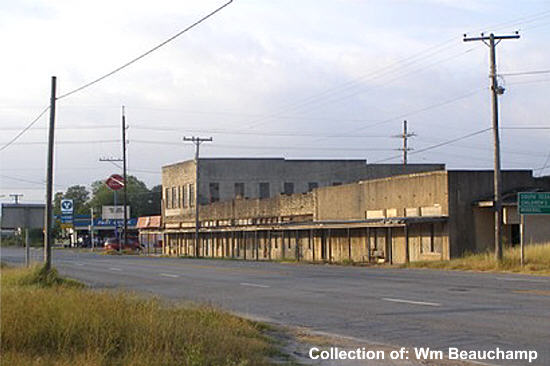
Pettus is at the junction of U.S. Highway 181 and Farm Road 623, fourteen miles north of Beeville in northern Bee County. It was called Dry Medio from its first settlement in the 1850s until the Civil War, when it came to be called Pettus City in honor of John F. Pettus, one of the most prominent of the area's early settlers.
Skidmore
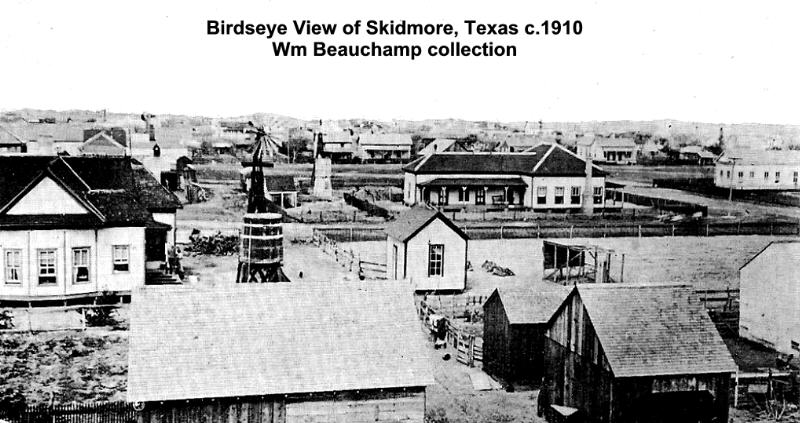
Skidmore is on State Highway 181 and a Southern Pacific line in the central southern half of Bee County. Samuel Cyle Skidmore, a Virginia native and cousin of Gen. Thomas J. (Stonewall) Jackson, moved to Texas in 1857 and eventually settled on Aransas Creek. In 1860 a post office named River Side, for its location by the stream, opened there briefly. Then from later in 1860 to 1866 a post office called Lattington, after its first postmaster P. Lattington, operated at the site.
The town of Skidmore was founded when Samuel's son Frank O. Skidmore, real estate dealer and cattleman, donated the townsite, right-of-way, and alternate blocks of land to the San Antonio and Aransas Pass Railway in 1886.
The next year a post office called Skidmore opened there. With the coming of the railroad the town gained its first doctor, F. B. Seymour, and its first newspaper editor and innkeeper, T. B. Atkins. The first Methodist United Sunday School in Bee County was established by John Galloway, a Scottish immigrant who worked on the Skidmore ranch. In 1893 Skidmore was moved to its present site south of Aransas Creek.
Tuleta
Tuleta is on State Highway 181 twelve miles north of Beeville in north Bee County. It was founded by Peter Unzicker, a Mennonite minister, who brought a colony of Mennonites from Cullom, Illinois, in 1906. Unzicker, a German, purchased 54½ acres of land from the Chittum-Miller ranch for the townsite, which was named for J. M. Chittum's daughter. The San Antonio and Aransas Pass Railway was built across the ranch in 1881. The depot opened in Tuleta in 1906; the following year the post office opened. The Mennonite church, built that year, was used for school on weekdays. In 1910 Amanda Stoltzfus organized the Tuleta Agriculture High School.

